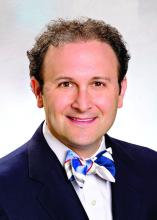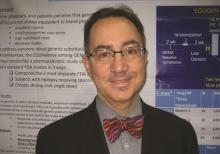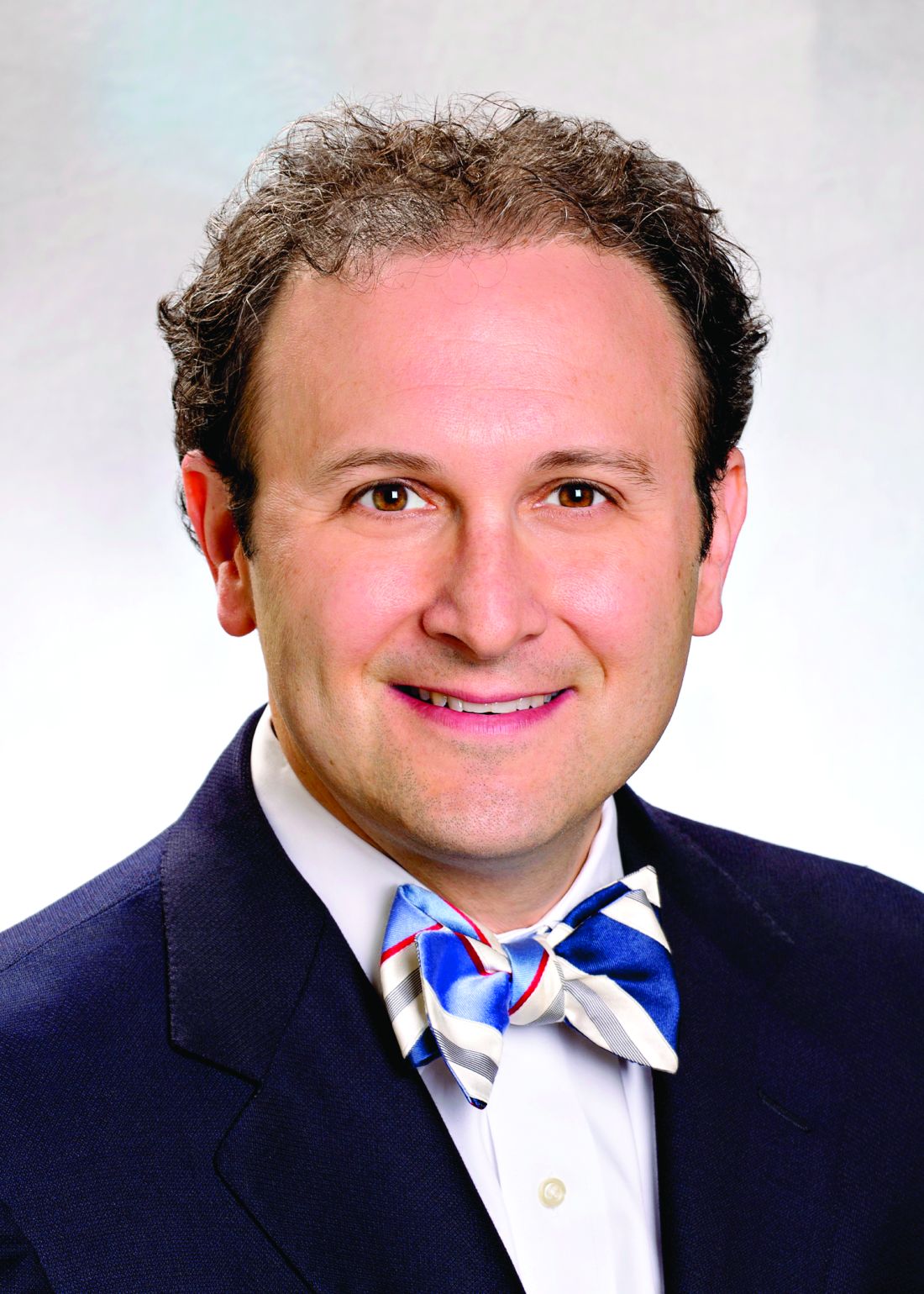User login
Switching between generic versions of the same antiepileptic drug made by different manufacturers does not appear to change the risk of seizure-related events in patients with epilepsy, according to a population-based, case-crossover study of generic antiepileptic drug users.
Instead, the study indicates that delays and complications of the medication refilling process might increase a patient’s risk for a seizure, said first author Aaron Kesselheim, MD, and his associates from Brigham and Women’s Hospital and Harvard Medical School, Boston (Neurology. 2016 Sep 28. doi: 10.1212/WNL.0000000000003259).
Although the results of previous observational studies have demonstrated increased seizure activity following a switch from brand name to generic antiepileptic drugs, Dr. Kesselheim and his associates pointed out that several recent randomized trials have found no link between generic drug switching and seizure risk.
The investigators identified 59,344 patients who had at least one refill of a prescription from the same manufacturer and 5,200 patients who switched from one generic to another during 2000-2010 in the Medicaid Analytic eXtract database as well as during 2005-2013 in a commercial health insurance database. Participants acted as their own controls in the study’s comparison of the effects of a refill or a refill with a switch in manufacturer on seizure-related events (a seizure requiring an emergency department visit or hospitalization) during a hazard period, defined as days 2–36 preceding a seizure-related event, and a control period, defined as days 51–85 preceding the seizure-related event.
Overall, generic antiepileptic refilling of the same medication from the same manufacturer was associated with an 8% increase in the odds of having a seizure-related event (95% confidence interval, 1.06–1.11). When the refill involved a switch to the same generic drug made by a different manufacturer, the odds of a seizure-related event rose by 9% (95% CI, 1.03–1.15). When this involved a change in the shape or color of the pill, the odds increased by 11% (95% CI, 1.05–1.18) but did not increase when the switch was made to a pill with the same color and shape. The increased odds of seizure-related events became nonsignificant when the researchers adjusted these comparisons for the process of refilling, which the authors noted “is often not straightforward. [And] patients have expressed frustration with delays and other complicating factors relating to refilling. … Greater work to enhance the refilling process, and to determine whether mail order pharmacies successfully improve outcomes on this point, is necessary.”
The study was not supported by any specific targeted funding. The investigators reported receiving support from various foundations and from programs within Harvard University and grants from the Agency for Healthcare Research and Quality and the Food and Drug Administration; the investigators also disclosed acting in a research support role for and/or receiving financial compensation from several pharmaceutical companies and other organizations.
[email protected]
On Twitter @jessnicolecraig
The study by Dr. Kesselheim and his colleagues is one of several recently aimed at reviewing the overall safety of generic drug switching. The Food and Drug Administration sponsored three clinical bioequivalence studies to determine the adequacy of average bioequivalence studies for ensuring safe conversion between different antiseizure products for patients with epilepsy. Taken together, these studies confirm that most patients can safely switch between generic formulations, even between tablets differing in appearance.
• Patients want to find a reason for the near-random pattern of their seizures. Threshold cortical epileptogenic activity triggers seizures in near-random patterns, and their timing might be influenced by triggers such as missing doses, stress, and hormonal changes.
• Patients’ views toward illness and treatments might influence their reporting of seizures and drug effects. This search for seizure explanations can even extend to pets with seizures.
• A small group of patients may be outside the 90% confidence interval bioequivalence acceptance range and may experience product switching effects.
Gregory L. Krauss, MD, is a professor of neurology at the Johns Hopkins Hospital, Baltimore. Michael D. Privitera, MD, is a professor and director of the University of Cincinnati epilepsy center. Their comments are derived from an editorial accompanying the report by Dr. Kesselheim and his colleagues (Neurology. 2016 Sep 28. doi: 10.1212/WNL.0000000000003272). They reported having no relevant financial disclosures.
The study by Dr. Kesselheim and his colleagues is one of several recently aimed at reviewing the overall safety of generic drug switching. The Food and Drug Administration sponsored three clinical bioequivalence studies to determine the adequacy of average bioequivalence studies for ensuring safe conversion between different antiseizure products for patients with epilepsy. Taken together, these studies confirm that most patients can safely switch between generic formulations, even between tablets differing in appearance.
• Patients want to find a reason for the near-random pattern of their seizures. Threshold cortical epileptogenic activity triggers seizures in near-random patterns, and their timing might be influenced by triggers such as missing doses, stress, and hormonal changes.
• Patients’ views toward illness and treatments might influence their reporting of seizures and drug effects. This search for seizure explanations can even extend to pets with seizures.
• A small group of patients may be outside the 90% confidence interval bioequivalence acceptance range and may experience product switching effects.
Gregory L. Krauss, MD, is a professor of neurology at the Johns Hopkins Hospital, Baltimore. Michael D. Privitera, MD, is a professor and director of the University of Cincinnati epilepsy center. Their comments are derived from an editorial accompanying the report by Dr. Kesselheim and his colleagues (Neurology. 2016 Sep 28. doi: 10.1212/WNL.0000000000003272). They reported having no relevant financial disclosures.
The study by Dr. Kesselheim and his colleagues is one of several recently aimed at reviewing the overall safety of generic drug switching. The Food and Drug Administration sponsored three clinical bioequivalence studies to determine the adequacy of average bioequivalence studies for ensuring safe conversion between different antiseizure products for patients with epilepsy. Taken together, these studies confirm that most patients can safely switch between generic formulations, even between tablets differing in appearance.
• Patients want to find a reason for the near-random pattern of their seizures. Threshold cortical epileptogenic activity triggers seizures in near-random patterns, and their timing might be influenced by triggers such as missing doses, stress, and hormonal changes.
• Patients’ views toward illness and treatments might influence their reporting of seizures and drug effects. This search for seizure explanations can even extend to pets with seizures.
• A small group of patients may be outside the 90% confidence interval bioequivalence acceptance range and may experience product switching effects.
Gregory L. Krauss, MD, is a professor of neurology at the Johns Hopkins Hospital, Baltimore. Michael D. Privitera, MD, is a professor and director of the University of Cincinnati epilepsy center. Their comments are derived from an editorial accompanying the report by Dr. Kesselheim and his colleagues (Neurology. 2016 Sep 28. doi: 10.1212/WNL.0000000000003272). They reported having no relevant financial disclosures.
Switching between generic versions of the same antiepileptic drug made by different manufacturers does not appear to change the risk of seizure-related events in patients with epilepsy, according to a population-based, case-crossover study of generic antiepileptic drug users.
Instead, the study indicates that delays and complications of the medication refilling process might increase a patient’s risk for a seizure, said first author Aaron Kesselheim, MD, and his associates from Brigham and Women’s Hospital and Harvard Medical School, Boston (Neurology. 2016 Sep 28. doi: 10.1212/WNL.0000000000003259).
Although the results of previous observational studies have demonstrated increased seizure activity following a switch from brand name to generic antiepileptic drugs, Dr. Kesselheim and his associates pointed out that several recent randomized trials have found no link between generic drug switching and seizure risk.
The investigators identified 59,344 patients who had at least one refill of a prescription from the same manufacturer and 5,200 patients who switched from one generic to another during 2000-2010 in the Medicaid Analytic eXtract database as well as during 2005-2013 in a commercial health insurance database. Participants acted as their own controls in the study’s comparison of the effects of a refill or a refill with a switch in manufacturer on seizure-related events (a seizure requiring an emergency department visit or hospitalization) during a hazard period, defined as days 2–36 preceding a seizure-related event, and a control period, defined as days 51–85 preceding the seizure-related event.
Overall, generic antiepileptic refilling of the same medication from the same manufacturer was associated with an 8% increase in the odds of having a seizure-related event (95% confidence interval, 1.06–1.11). When the refill involved a switch to the same generic drug made by a different manufacturer, the odds of a seizure-related event rose by 9% (95% CI, 1.03–1.15). When this involved a change in the shape or color of the pill, the odds increased by 11% (95% CI, 1.05–1.18) but did not increase when the switch was made to a pill with the same color and shape. The increased odds of seizure-related events became nonsignificant when the researchers adjusted these comparisons for the process of refilling, which the authors noted “is often not straightforward. [And] patients have expressed frustration with delays and other complicating factors relating to refilling. … Greater work to enhance the refilling process, and to determine whether mail order pharmacies successfully improve outcomes on this point, is necessary.”
The study was not supported by any specific targeted funding. The investigators reported receiving support from various foundations and from programs within Harvard University and grants from the Agency for Healthcare Research and Quality and the Food and Drug Administration; the investigators also disclosed acting in a research support role for and/or receiving financial compensation from several pharmaceutical companies and other organizations.
[email protected]
On Twitter @jessnicolecraig
Switching between generic versions of the same antiepileptic drug made by different manufacturers does not appear to change the risk of seizure-related events in patients with epilepsy, according to a population-based, case-crossover study of generic antiepileptic drug users.
Instead, the study indicates that delays and complications of the medication refilling process might increase a patient’s risk for a seizure, said first author Aaron Kesselheim, MD, and his associates from Brigham and Women’s Hospital and Harvard Medical School, Boston (Neurology. 2016 Sep 28. doi: 10.1212/WNL.0000000000003259).
Although the results of previous observational studies have demonstrated increased seizure activity following a switch from brand name to generic antiepileptic drugs, Dr. Kesselheim and his associates pointed out that several recent randomized trials have found no link between generic drug switching and seizure risk.
The investigators identified 59,344 patients who had at least one refill of a prescription from the same manufacturer and 5,200 patients who switched from one generic to another during 2000-2010 in the Medicaid Analytic eXtract database as well as during 2005-2013 in a commercial health insurance database. Participants acted as their own controls in the study’s comparison of the effects of a refill or a refill with a switch in manufacturer on seizure-related events (a seizure requiring an emergency department visit or hospitalization) during a hazard period, defined as days 2–36 preceding a seizure-related event, and a control period, defined as days 51–85 preceding the seizure-related event.
Overall, generic antiepileptic refilling of the same medication from the same manufacturer was associated with an 8% increase in the odds of having a seizure-related event (95% confidence interval, 1.06–1.11). When the refill involved a switch to the same generic drug made by a different manufacturer, the odds of a seizure-related event rose by 9% (95% CI, 1.03–1.15). When this involved a change in the shape or color of the pill, the odds increased by 11% (95% CI, 1.05–1.18) but did not increase when the switch was made to a pill with the same color and shape. The increased odds of seizure-related events became nonsignificant when the researchers adjusted these comparisons for the process of refilling, which the authors noted “is often not straightforward. [And] patients have expressed frustration with delays and other complicating factors relating to refilling. … Greater work to enhance the refilling process, and to determine whether mail order pharmacies successfully improve outcomes on this point, is necessary.”
The study was not supported by any specific targeted funding. The investigators reported receiving support from various foundations and from programs within Harvard University and grants from the Agency for Healthcare Research and Quality and the Food and Drug Administration; the investigators also disclosed acting in a research support role for and/or receiving financial compensation from several pharmaceutical companies and other organizations.
[email protected]
On Twitter @jessnicolecraig
FROM NEUROLOGY
Key clinical point:
Major finding: Generic antiepileptic refilling was associated with an 8%-9% increase in the odds of having a seizure-related event, but this association disappeared after the investigators adjusted for the refilling process.
Data source: A population-based, case-crossover study of 64,544 generic antiepileptic drug users.
Disclosures: The study was not supported by any specific targeted funding. The investigators reported receiving support from various foundations and from programs within Harvard University and grants from the Agency for Healthcare Research and Quality and the Food and Drug Administration; the investigators also disclosed acting in a research support role for and/or receiving financial compensation from several pharmaceutical companies and other organizations.



